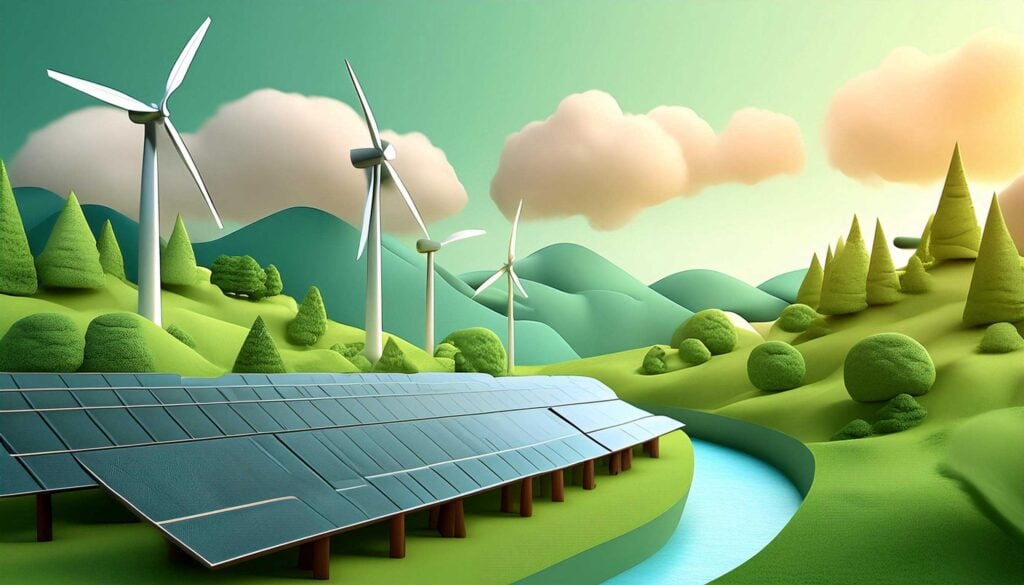Top 10 Countries Leading in Renewable Energy

As the world shifts towards sustainability and combating climate change, many countries are emerging as global leaders in renewable energy. From harnessing wind and solar power to investing in hydropower and green hydrogen, these nations are setting the standard for a cleaner, greener future. Here are the top 10 countries leading the charge in renewable energy development and innovation.
1. Iceland
Iceland is a global leader in renewable energy, with nearly 100% of its electricity generated from renewable sources, primarily geothermal and hydropower.
Why It Leads: Iceland’s unique volcanic landscape provides abundant geothermal energy, while its rivers and waterfalls fuel hydropower plants. The country’s commitment to reducing fossil fuel use sets an impressive example. Iceland is also exploring hydrogen production as a future export market.
2. Norway
Norway generates around 98% of its electricity from renewable sources, predominantly hydropower. It is also investing heavily in offshore wind and green hydrogen.
Why It Leads: Norway’s vast network of rivers and lakes, combined with government incentives for clean energy, makes it a renewable energy powerhouse. The country also aims to electrify its transport sector by 2025. Additionally, Norway is a pioneer in carbon capture and storage (CCS) technologies.
3. Denmark
Denmark is a pioneer in wind energy, with wind power contributing over 50% of the country’s electricity. It aims to be completely fossil fuel-free by 2050.
Why It Leads: Denmark’s investment in offshore wind farms and innovative energy policies have made it a global wind energy leader. The country is also developing new energy islands to harness offshore wind power, with plans to supply green energy to neighboring countries.
4. Germany
Germany is at the forefront of Europe’s renewable energy revolution, generating over 46% of its electricity from renewables, including wind, solar, and biomass.
Why It Leads: Through its Energiewende policy, Germany has transitioned away from coal and nuclear power, driving significant investments in wind and solar farms. Germany is also investing in battery storage technology and decentralized energy grids.
5. China
China is the world’s largest producer of solar and wind energy, and it continues to expand its renewable energy capacity at a rapid pace.
Why It Leads: Driven by government policies and the need to reduce air pollution, China has built massive solar farms and wind projects, positioning itself as a renewable energy superpower. China is also focusing on large-scale hydropower and tidal energy projects to diversify its renewable energy portfolio.
6. Sweden
Sweden derives over 54% of its energy from renewable sources, with hydropower and bioenergy being the primary contributors.
Why It Leads: Sweden’s commitment to carbon neutrality by 2045 has fueled innovation in bioenergy, wind, and solar power. The country also invests in green hydrogen technology and electrification of public transportation networks.
7. Spain
Spain generates more than 40% of its electricity from renewable sources, with wind and solar playing key roles.
Why It Leads: Spain’s favorable climate and investment in solar energy have made it a leader in the European renewable market. The country is rapidly expanding its solar and wind capacity and is developing large-scale battery storage solutions to manage energy intermittency.
8. Portugal
Portugal generates around 60% of its electricity from renewable sources, including hydropower, wind, and solar.
Why It Leads: Portugal’s progressive energy policies and investments in floating solar farms have allowed it to surpass renewable energy targets ahead of schedule. The country is also advancing offshore wind technology and wave energy projects.
9. United States
The United States is a major player in renewable energy, with wind and solar contributing a growing share of the country’s electricity generation.
Why It Leads: State-level initiatives, technological advancements, and private sector investment have driven growth in renewables across the U.S., with Texas and California leading the charge. The U.S. is also expanding offshore wind capacity and exploring next-generation nuclear technologies.
10. India
India is rapidly expanding its renewable energy capacity, particularly in solar and wind energy, as part of its ambitious goal to reach 500 GW of non-fossil fuel energy by 2030.
Why It Leads: India’s government policies, solar parks, and wind farms are driving significant progress, making it one of the fastest-growing renewable energy markets. India is also investing in green hydrogen and rural electrification projects powered by renewables.
Final Thoughts: These countries are leading the global transition to renewable energy by leveraging natural resources, investing in cutting-edge technology, and setting ambitious sustainability goals. As renewable energy continues to grow, the lessons learned from these leaders will play a crucial role in shaping a more sustainable and resilient future for the planet. Collaboration and innovation in energy storage, grid modernization, and international energy trading will further accelerate the transition to a cleaner world.
